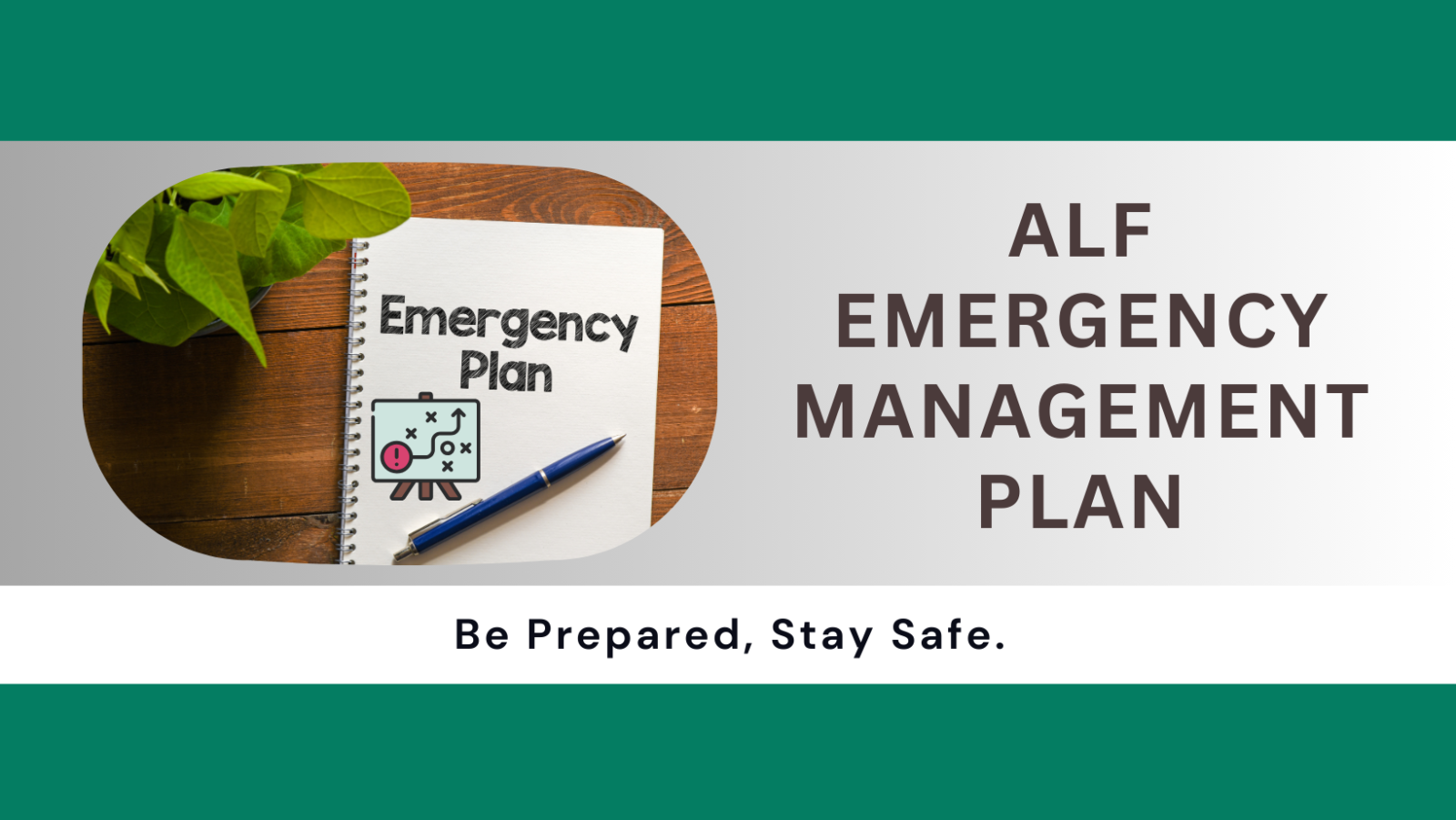
Assisted Living Emergency Management Plan
An Assisted Living Emergency Management Plan is a comprehensive strategy developed by assisted living facilities to ensure the safety and well-being of residents, staff, and visitors during various emergency situations. This plan outlines specific procedures and protocols to be followed before, during, and after emergencies to mitigate risks, protect lives, and minimize property damage.
Emergency Management Planning criteria for Assisted Living Facilities
Emergency management planning for assisted living facilities involves careful consideration of various factors to ensure the safety and well-being of residents, staff, and visitors during emergencies. Here are key criteria to consider when developing an emergency management plan for assisted living facilities:
Risk Assessment:
- Identify and assess potential risks and hazards specific to the facility’s location, including natural disasters, technological emergencies, medical emergencies, fires, and security threats.
Evacuation Plans:
- Develop detailed evacuation plans for different types of emergencies.
- Assign roles and responsibilities to staff members during evacuations.
- Establish clear evacuation routes and assembly points.
- Account for residents with mobility challenges or medical needs.
Communication Protocols:
- Establish a reliable communication system to disseminate information to residents, their families, staff, and emergency responders.
- Ensure that communication methods are accessible to individuals with disabilities or language barriers.
Emergency Shelter and Supplies:
- Identify and establish emergency shelters if evacuation is not possible.
- Maintain an inventory of emergency supplies, including first aid kits, medications, non-perishable food, water, blankets, and hygiene items.
Medical Response:
- Outline procedures for medical emergencies, including coordination with local emergency medical services (EMS).
- Maintain updated medical records and contact information for all residents.
- Ensure that medical staff is adequately trained to respond to emergencies.
Staff Training and Drills:
- Conduct regular training sessions for staff on emergency procedures.
- Conduct periodic emergency drills to test the effectiveness of the plan and identify areas for improvement.
- Train staff on the use of emergency equipment and evacuation procedures.
Coordination with Local Authorities:
- Establish and maintain relationships with local emergency management agencies, fire departments, law enforcement, and healthcare providers.
- Participate in community-wide emergency planning and coordination efforts.
- Obtain and understand local emergency response plans and protocols.
Power Outage Preparedness:
- Develop plans for dealing with power outages, including provisions for backup power systems.
- Identify essential medical equipment and ensure it is supported by backup power.
- Train staff on procedures for managing power outages.
Family and Resident Communication:
- Establish a system for communicating with families during emergencies.
- Provide families with information on how and where to reunite with residents after an evacuation.
- Ensure that residents and families are educated on the facility’s emergency procedures.
Post-Emergency Recovery:
- Develop procedures for assessing and repairing any damage to the facility.
- Provide support and resources for residents and staff to recover emotionally and physically.
- Establish a plan for returning to normal operations after an emergency.
Continuous Improvement:
- Regularly review and update the Emergency Management Plan to incorporate lessons learned from drills and actual events.
- Encourage feedback from staff, residents, and families for ongoing improvement.
- Stay informed about changes in regulations and best practices related to emergency management.